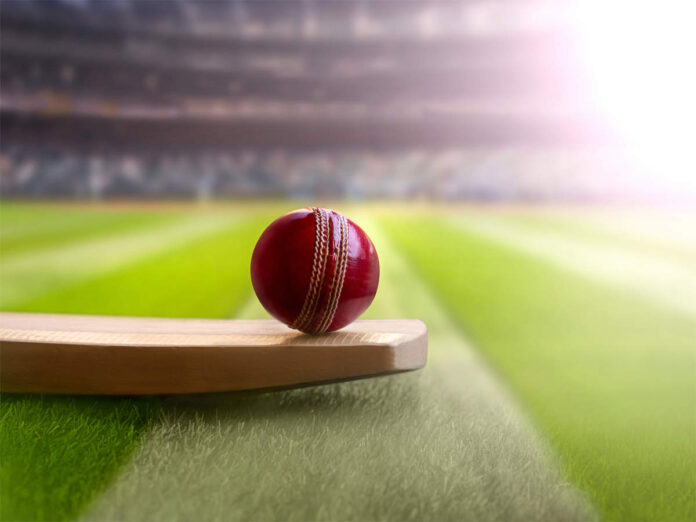Cricket is a bat-and-ball game played b/w two teams of 11 players on a field, at the centre of which is a rectangular 22-yardlong pitch with a wicket at each end. One team bats. Attempting to score as many runs as possible, whilst their opponents field. Each phase of game is called an innings. either 10 batsmen have been dismissed or 20 over or 50 year or test , the innings ends and the two teams then swap roles.
Winning Team in Cricket
The winning team is the one that scores the most runs, including any extras gained, during their innings. Indian cricket team, also called as Team India and Men in Blue, represents India in international cricket. Governed by BCCI, it is a full member of the ICC with Test, ODI and T201.Although cricket was introduced to India by European in the 18th century, and the first cricket club was established in Calcutta in 1792, India’s national cricket team did not play its first Test match until 25 June.
1932 at Lord’s, becoming the 6 team to be granted Test cricket status. In its 1st 50 years of international cricket, India was one of the weaker teams, winning only 35 of the first 196 Test matches it played. From 1932 India had to wait until 1952, almost 20 years for its first Test victory. gained strength in the1970s with the emergence of players such as batsmen Sunil Gavaskar , all-rounder Kapil Dev and the Indian spin Erapalli Prasanna, Srinivas Venkataraghavan, Bhagwat Chandrasekhar etc.
Indian Cricket Team
Option of two men have captained the Indian cricket team in at least one Test match, although only six have led the team in more than 25 matches, and six have captained the team in ODIs but not Tests, India’s first captain was CK Nayudu, who led the team in four matches against England: one in England in 1932 and a series of three matches at home in 1933-34. Amaranth, India’s fourth captain, led the team in its first Test match after Indian independence. He also captained the side to its first Test victory and first series win, both in a three-match series at home . From 1952 until 1961-62, India had a number of captains Vijay Hazare.
Mansoor Ali Khan was the team captain for 36 Test matches from 1961-62 to 1969-70, returning for another four matches against West Indies in 1974-75. I However, in 1967-68, Pataudi led India against New Zealand tour, which ended in India winning the Test series 3-1. In 1970-71.
India registered its first Test series wins in the West Indies and England. India played its first ODI in 1974, also under his captaincy. India won its first ODI under the captaincy of Srinivasaraghavan in the 1975 Cricket World Cup, against Africa. Between 1975-79. Bishen Singh captained the team in 22 Tests and 4 ODIs, winning 6 Tests and one ODI.
RULES AND REGULATIONS
A cricket match is divided innings . It is decided before the match whether the teams will have one innings During an innings one team fields and the other bats. The two teams switch between fielding and batting after each innings. 11 members of the fielding team take the field, but only 2 Members of the batting team are on the field .
The order of batsmen is usually announced just before the match, but it can be varied. A coin toss is held by the team captains just before the match starts: the winner decides whether to bat or field first. The cricket field is usually circular or oval in shape, with a rectangular pitch at the centre. The edge of the playing field is marked with a boundary, which could be a fence, part of the stands, a rope or a painted line.
The pitch is marked with painted lines: a bowling crease in line with the wicket, and a batting or popping crease four feet in front of it. The wicket is made of three vertical stumps supporting two small horizontal bails. A wicket is put down if at least one bail is dislodged, is knocked down by the ball, but also if the batsman does it with his body, equipment.
Hitting the Wicket
This also described hitting the wicket – though if the ball hits the wicket but does not dislodge a bail then it is not out .The fielding team’s other nine members stand outside the pitch. spread out across the field. The fielding captain often tactically changes their position between balls.
Conclusion
There is always an umpire at each end of the pitch. Bowler releases the ball over-hand as he reaches the bowling crease. (If he crosses the crease before he releases the ball, then it is a no ball, the batsman cannot be dismissed, and the batting team gets a extra run. If the ball passes the far wicket out of reach of the batsman then it is called a wide, also .) The ball can be bowled so that it bounces on the pitch.
By: Kushal S
Write and Win: Participate in Creative writing Contest & International Essay Contest and win fabulous prizes.














